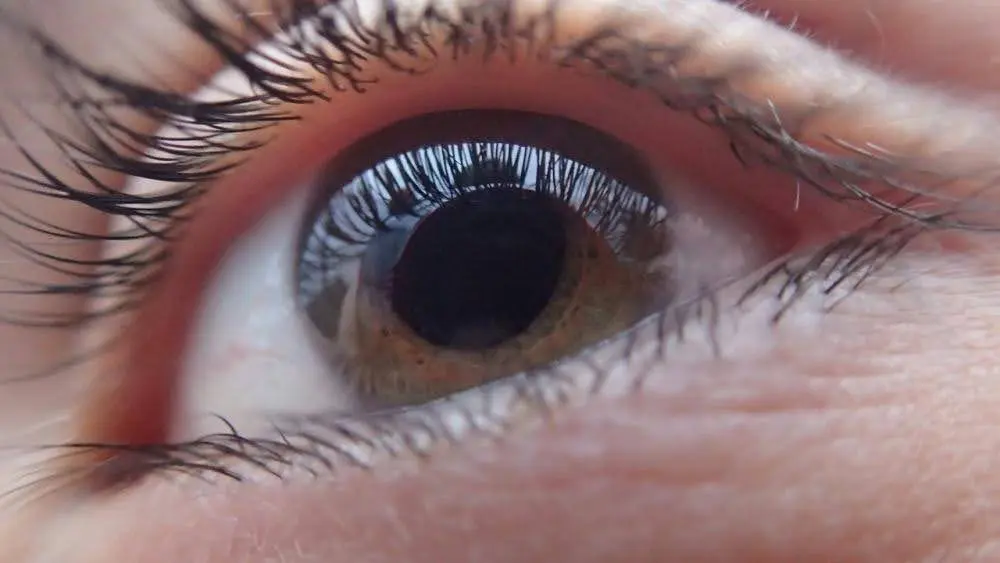Cataracts, a common eye condition, develop when the eye’s lens becomes cloudy, causing vision impairment. While ageing is the primary cause of this clouding, other factors like smoking, diabetes, prolonged exposure to sunlight, and specific medications can also contribute to its onset. Typical symptoms encompass blurry vision, poor night vision, sensitivity to light, and perceiving halos around lights. As these symptoms gradually progress, they can significantly disrupt daily life, prompting the search for effective treatment options.
And one persistent question that arises in addressing this condition is whether cataracts can be addressed without resorting to surgery. This inquiry arises from a desire for less invasive treatments and mirrors the ongoing progress in the field of eye care. It highlights the exploration of alternative approaches to cataract management that diverge from the conventional surgical path.
As we delve into this subject, it is essential to comprehend the current landscape of cataract treatment and the emerging possibilities in the realm of non-surgical interventions, if there are any.
What is Cataract Surgery?
But first, what exactly is cataract surgery? This commonly performed procedure involves the removal of the clouded natural lens of the eye and replacing it with a transparent, artificial lens known as an intraocular lens (IOL).
How is it Performed?

The method of performing cataract surgery varies depending on the type of procedure recommended by eye specialists, each with its unique approach and techniques.
The various types of cataract surgeries include:
- Phacoemulsification: This technique involves using an ultrasound device to disintegrate the cloudy lens, which is then suctioned out through a small incision. An artificial lens is then implanted to replace the natural lens.
- Femtosecond Laser-Assisted Cataract Surgery (FLACS): FLACS utilises a femtosecond laser for making incisions and fragmenting the cataract. Ultrasound-based phacoemulsification is then leveraged for lens removal. However, it’s important to note that FLACS is an evolving technique, and experts are still exploring its full scope and benefits.
- Extracapsular Cataract Extraction (ECCE): Extracapsular cataract extraction initiates with an incision along the outer edge of the cornea. The surgeon then delicately enters and opens the front part of the lens capsule. While larger cataracts can usually be removed whole, smaller fragments may necessitate suction for extraction. This method is typically chosen when phacoemulsification or laser-assisted procedures are not feasible due to the cataract’s size or density.
Each of these methods is designed to effectively address cataracts, with the choice of procedure depending on the specific condition of the cataract and the patient’s overall eye health.
When Do You Need Cataract Surgery?
Cataract surgery becomes a consideration when the impact of cataracts on your vision significantly disrupts your daily life. For instance, if tasks like driving or watching television become challenging due to impaired vision, it’s a sign to contemplate surgery. From this, it is crucial to understand that the decision to undergo surgery is not based on the cataract being “ready” for removal; rather, it hinges on whether the cataract impedes your vision to the point where it affects your daily routines.
In situations where the cataract is minor and doesn’t interfere with your vision or daily activities, immediate intervention may not be necessary. Eyeglasses can often suffice to support your vision at this stage. However, if corrective eyewear doesn’t provide adequate assistance or if the cataract progressively worsens your vision, your ophthalmologist might eventually recommend cataract surgery.
Of course, once the decision for cataract surgery is made, you’ll be guided through various preparatory steps. From being informed of pre-surgery preparations to partaking in various pre-operative tests, various steps will be taken to ensure your readiness for the upcoming procedure.
What Happens if Cataract is Left Untreated without Surgery?
If cataracts are left untreated, the progression of the condition can lead to significant vision impairment. This is because cataracts gradually cause the lens of the eye to become more opaque, eventually blocking the passage of light and leading to vision loss.
Some of the after-effects of leaving it untreated include:
- Worsening Vision: As mentioned, cataracts tend to worsen over time, leading to increasingly blurred and cloudy vision. Colours may appear faded, and activities like reading, driving, or recognising faces can become extremely challenging.
- Reduced Quality of Life: Impaired vision can result in a reduced quality of life. Everyday tasks may become frustrating or unsafe, potentially leading to accidents or falls.
- Increased Dependency: As vision deteriorates, individuals may become more reliant on others for assistance with daily tasks, eroding their independence.
- Complications: In advanced stages, cataracts can lead to complications like inflammation within the eye, which can further threaten vision and overall eye health.
Therefore, while the decision to undergo cataract removal surgery is a personal one, understanding the potential consequences of not getting surgery is crucial.
Is There a Natural Treatment for Cataracts Without Surgery?
As of now, there are no verified non-surgical methods to effectively remove cataracts. Despite various claims by some products and medications, none have been scientifically proven to reverse the growth of cataracts. While ongoing research continues to seek alternative solutions, the only currently established and effective method to remove cataracts is through surgical intervention.
Oxysterol: The Latest Cataract Treatment Without Surgery?
However, recent medical advancements have brought attention to a new study exploring the use of a chemical compound, oxysterol, as a potential non-surgical treatment for cataracts.
This study, primarily conducted in mice, involves oxysterol — an oxygenated derivative of cholesterol known for its role in cholesterol regulation and transport. Researchers are investigating whether this compound can clear cataract-clouded lenses without the need for surgery. However, it’s crucial to understand that this research is still in its experimental phase. Therefore, the use of oxysterol for treating cataracts in humans remains a subject for future study and is not yet an available or proven treatment option.
Taking Steps to Prevent Cataracts
While cataracts themselves cannot be reversed and require surgery for correction when they significantly affect daily life, some lifestyle adjustments may help in slowing their development. However, do note that it is impossible to completely prevent cataracts, as they are often a natural part of ageing.
Especially for patients not yet at the stage where surgery is necessary, consider adopting these habits to potentially slow their progression:
- Maintaining a Healthy Diet: Consume foods rich in vitamins C and E, along with lutein, which are thought to contribute to eye health.
- Eye Protection: Wear sunglasses to shield your eyes from intense UV rays, which may play a role in cataract development.
- Lifestyle Changes: Quit smoking and moderate alcohol intake, as both have been linked to increased cataract risk.
- Managing Health Conditions: Keep underlying medical conditions, such as diabetes, under control.
- Regular Eye Check-ups: Frequent eye examinations are essential for early detection and management of eye health issues.
- Medication Awareness: Discuss with your eye doctor or specialist the impact of any prescription medications on the risk of developing cataracts.
By incorporating these practices into your daily routine, you may be able to play a part in managing the progression of cataracts and maintaining overall eye health.

Dr. Christopher Khng, specializes in Complex Cataract and Anterior Segment Reconstruction Surgery, in particular, Iris Reconstruction and surgery for Aniridia. His other areas of expertise include Complex Lens surgery, New Lens and Phacoemulsification technologies, Refractive surgery, Phakic IOLs (the Implantable Collamer Lens, ICL), and small-incision, topical anesthesia phacoemulsification cataract surgery. Dr. Khng is a member of the Singapore Medical Association (SMA), a Fellow of the American Academy of Ophthalmology, the American Society of Cataract and Refractive Surgery (ASCRS), and the European Society of Cataract and Refractive Surgery (ECSRS). He is registered with the Singapore Medical Council (SMC) in Singapore and with the General Medical Council (GMC) for practice in the United Kingdom.

